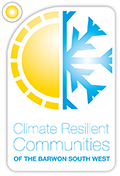| Climate effect | Natural assets – climate risk statements |
|---|---|
| Increase in mean and extreme temperature |
An increase in mean and extreme temperature leading to:
|
| Increase in the severity of precipitation events | An increase in the severity of precipitation events could lead to:
|
| Rising sea levels | Rising sea levels and coastal inundation could lead to:
|
Table 18: Climate risk statements - natural assets
Appendix 4 - Municipal risks by sector
Regional sector 2: Buildings








